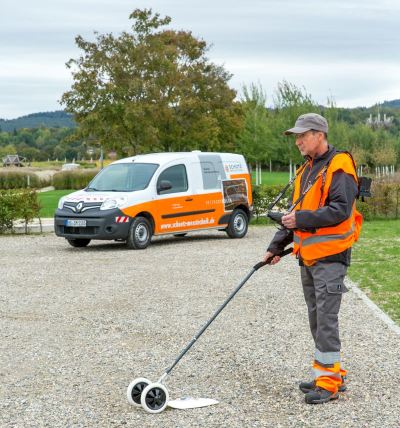Above-ground control of underground lines, pipe network control
 In the regulations G465-1 (inspection of gas pipe networks and gas systems) drawn up by the DVGW, regular checks are required as part of preventive maintenance. The tightness and functionality are checked.
In the regulations G465-1 (inspection of gas pipe networks and gas systems) drawn up by the DVGW, regular checks are required as part of preventive maintenance. The tightness and functionality are checked.
The first step and, as a rule, the most complex part of checking underground gas lines is the detection of gas traces above ground as the first indication of a suspected leak. With special probes, depending on the surface near the gas pipe, the soil is checked for fuel gas. In the vicinity of the gas line, because fuel gas can only escape and be detected through existing interruptions in the often closed surface.
Disturbance variables in the above-ground inspection
The gas can reach all underground facilities along canals or pipelines. When determining a gas concentration, it is essential to check these systems.
The soil climate (humidity, temperature ...) influences the gas leakage. In the event of smaller leaks, certain bacteria can convert the methane and partially convert it (see natural gas swamp gas differentiation). A leak can be simulated by passing cars; the leak should be measured again in order to obtain a reliable measurement result.
The following gas detection devices and gas measuring devices from Schütz Messtechnik can be used for this purpose.
Selection of the suitable probe system
The selection of the suitable probe system is one of the decisive factors for the successful course of a gas pipe network inspection. It makes no sense to keep the sensitivity of the device high if it is destroyed by a bad fit on the ground, too large a volume in the mandrel or other leaks in the system.




